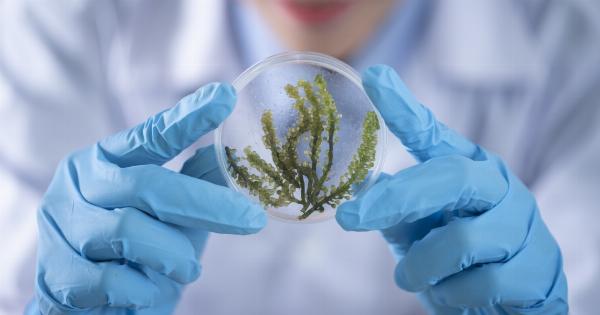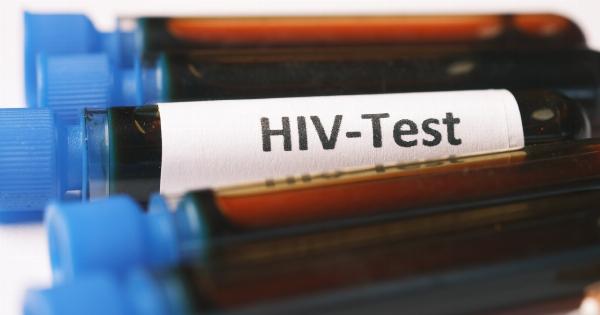HIV (Human Immunodeficiency Virus) has been a global health crisis for decades, affecting millions of people worldwide. It is a virus that attacks the immune system, making individuals vulnerable to various infections and diseases.
However, amidst the challenges faced in combating this deadly virus, there has been a recent groundbreaking discovery by scientists that offers a glimmer of hope in the fight against HIV.
Understanding HIV
Before delving into the recent discovery, it is crucial to have a basic understanding of the HIV virus. HIV primarily attacks CD4 cells, a type of white blood cell that plays a vital role in the immune system’s defense mechanism.
The virus spreads through body fluids, including blood, semen, vaginal fluids, and breast milk. Once inside the body, HIV replicates itself and gradually weakens the immune system.
The Ongoing Battle against HIV
Since the identification of HIV as the cause of AIDS (Acquired Immunodeficiency Syndrome) in the early 1980s, numerous efforts have been made to develop effective treatments and preventive measures.
Antiretroviral therapy (ART) has revolutionized HIV treatment, allowing infected individuals to live longer and healthier lives. Moreover, education and awareness campaigns have played a critical role in spreading knowledge about safe practices and reducing the stigma associated with HIV.
Unveiling the Groundbreaking Discovery
Scientists have recently made a significant breakthrough in understanding the mechanism behind HIV transmission and progression.
A team of researchers from a renowned medical institute uncovered a unique characteristic of the virus that sheds light on potential new treatment strategies.
Identification of Viral Reservoirs
One pivotal aspect of the discovery was the identification of viral reservoirs in the human body. These reservoirs are pockets of HIV-infected cells that lie dormant and are unaffected by existing antiretroviral therapies.
Prior to this breakthrough, it was believed that viral replication only occurred in actively infected CD4 cells. However, the researchers discovered that the virus can hijack other types of cells, such as macrophages, to establish hidden reservoirs that are difficult to target.
Implications for Treatment
The finding of these hidden reservoirs has significant implications for developing effective treatment strategies.
By pinpointing the specific cells involved in viral persistence, scientists can now explore novel approaches to eliminate or control these reservoirs. This breakthrough has opened up new avenues of research, paving the way for potential therapies that could help eradicate the virus or achieve long-term remission.
Combining Multiple Approaches
The breakthrough discovery has also highlighted the importance of combining multiple approaches to combat HIV.
While antiretroviral therapy has been highly effective in suppressing viral replication, it is unable to completely eliminate the hidden reservoirs. Therefore, researchers are now exploring combination therapies that target both actively infected cells and those lying dormant in reservoirs.
Gene Editing Technology
Another groundbreaking aspect of this discovery involves the potential use of gene editing technology to eliminate HIV-infected cells. With the advent of CRISPR-Cas9, scientists have gained the ability to precisely edit genetic material.
This remarkable tool offers hope for eradicating the viral reservoirs by selectively targeting and modifying the infected cells.
Challenges and Future Directions
While the recent discovery holds immense promise, there are various challenges to overcome before translating it into practical applications. One significant hurdle is to ensure the safety and efficacy of gene editing techniques.
Continuous research is required to refine and optimize the gene editing process, minimizing off-target effects and potential risks.
Furthermore, gaining regulatory approvals and addressing ethical concerns surrounding human gene editing are critical aspects that need to be meticulously addressed.
Collaborative efforts between scientists, regulatory bodies, and ethics committees are crucial to navigate through these challenges and ensure responsible use of gene editing technology.
Conclusion
The groundbreaking discovery made by scientists on the HIV virus marks a significant milestone in the battle against this global health crisis.
The identification of viral reservoirs and the potential use of gene editing technology offer new hope for developing more effective treatments and even finding a cure for HIV. However, it is important to remain cautious and acknowledge that further research is necessary to fully realize the potential of this breakthrough.
With continued dedication and collaboration, scientists and researchers are working tirelessly to transform this groundbreaking discovery into tangible solutions that can change the lives of millions affected by HIV.


























